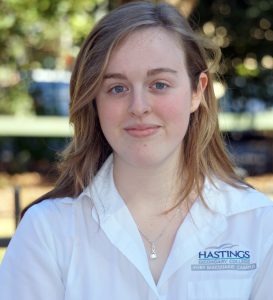 Author: Rachel Alger
Author: Rachel Alger
Community, State: Port Macquarie, New South Wales
Age, Grade: 16, Year 11
Bio: Click here
If you were Prime Minister for a day, what would you do to help achieve gender equality? Think locally and nationally!
A career in science is not a consideration for any Port Macquarie girls I know. For the future, this is a real problem; as Prime Minister, this is the area I would revolutionise.
Browsing the toy shop’s science section, dozens of DIY kits line the walls. From astronomy to biology, these toys inspire the scientific aspirations of Australia’s future leaders – except their demographic is clearly boys. The bright pink “Science for Girls” shelves, crammed with nail polish, blatantly show girls’ expected contributions to science.
Girls are raised to believe that they are incapable of scientific innovation – it’s no wonder that a career in science never occurs to them. The disturbing lack of female role models in science is also an influence; with women comprising just 9.8% of Australia’s engineering workforce1, why would girls aspire to STEM2 occupations?
Most famous scientists we are exposed to are male; how many female scientists can you name? The absence of female leaders in science subliminally drills into girls that female scientists aren’t common. Even if they are interested, science simply isn’t something girls ever subconsciously see themselves doing. If women were better represented, science would not seem such an alien concept, and more girls would consider it. We need to familiarise females in science.
As Prime Minister for a day, I would impose a scheme encouraging young women to consider science-based careers.
On a local level, this would take the form of free, community-focused science activities for school-aged girls. These activities, including science-based games, would take place at school, so girls with external commitments could participate. They would also be held in the town library and the community centre, giving every girl the opportunity to learn and take an interest, regardless of economic or social boundaries. For out-of-town girls, events would be available online, so distance would never hinder opportunity. Some similar programs run in cities, but for Port Macquarie, these opportunities are unheard of.
Nationally, this would involve government-funded scholarships for women entering STEM courses. I would propose nation-wide extracurricular courses for girls in school; these courses would allow girls to develop skills such as programming – essential in establishing a scientific background. The courses would also provide them with exposure to various scientific careers through female guest speakers (either in person or through video conference) from different fields of science, offering younger girls real-world insight and older girls an opportunity to build a network of industry contacts. Additionally, I would end gendered marketing in our country, so there are no expectations forced on children to live in a certain way.
Science is the future; inspiring innovation in our nation’s youth is vital. If girls cannot recognise their interests in STEM-related areas, they will be left behind from pioneering the most exciting advances. Computer scientist Anita Borg proposed that the gender ratio in technological fields would be 50/50 by 2020. With these schemes in place, I believe we could get there.
1 Engineering Australia. Women In Engineering. 2012.
2 Science, Technology, Engineering, Mathematics
